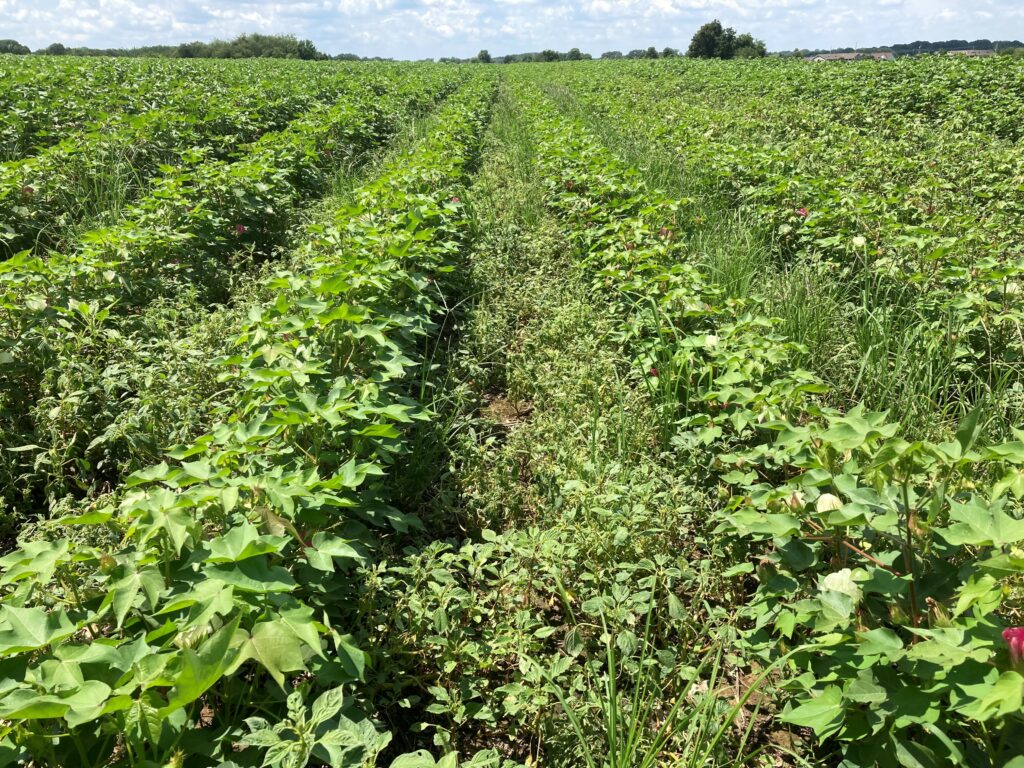
My understanding is that some cotton planted this year will contain the ThryvOn trait. According to UT entomologist Sebe Brown these varieties will likely not require any POST foliar insecticide application for thrips. This is great as far as management for that pest but from a weed management perspective this could be a problem.
That traditional thrips application timing of 1 to 2 leaf cotton really aided weed control and there are two reasons for this. First, that timing was the driver for a residual herbicide application that would pick up the slack as the at-planting residual was playing out. Overlaying another residual on one that is running out of shelf life is a great tactic to manage weeds. The fear from a weed management perspective is that without the traditional 1 to 2 leaf residual herbicide application, a flush of pigweed and grass will occur on a more regular basis that up to this point was not a major issue.
Second, that much needed thrips application typically was tankmixed with a residual herbicide as well as dicamba and glyphosate. As such, if often helps facilitate a timelier application of dicamba and glyphosate to smaller weeds. Without the added urgency to spray thrips, there is a danger of more frequent later dicamba and glyphosate applications on larger pigweed and grasses that will be present in greater numbers.
None of this would be a major concern if it was not for the fact we are seeing dicamba providing sketchy Palmer amaranth control in many fields and glyphosate providing only marginal control of goosegrass and junglerice across most of the state (Picture 1). Spraying increased populations of those weeds at larger weed sizes could lead to some real weed control issues later this spring.
For all the folks scouting cotton this spring, I would suggest that in ThryvOn cotton to take time to monitor if weeds are starting to break at the 1 to 2 leaf stage and then alert growers promptly. It will be easy for growers to not be as vigilant since thrips are not a major concern in that technology and possibly let Palmer amaranth and goosegrass get out of hand.

